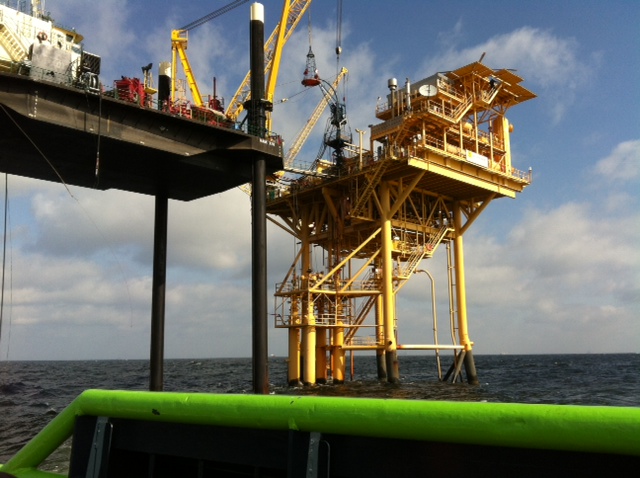Thru-Tubing Plug-Back Operations
 Thru-Tubing Plug-Back Operations
Thru-Tubing Plug-Back OperationsThru-Tubing Plug Back Operations are a low cost/high success rate method of achieving well zone isolation via thru-tubing equipment.
Thru-Tubing Plug-Back Operations use a thru-tubing bridge plug (TTBP) and special cement slurry system to achieve zonal isolation in casing. TTBPs allow operators to run thru small restrictions and set in casing diameters three times the TTBP run-in diameter.
Project Goals:
The three most common project goals are:
The three most common project goals are:
1. Isolation of a well zone, therein providing the option of perforating a new uphole well zone
2. Interzonal isolation between existing perforated intervals
3. Temporary or permanent abandonment of a well or specific well zone
Projects Per Year:
Worldwide, over 4,000 thru-tubing plug-back projects are performed each year. Nearly 90% of these operations are conducted on electric-line (EL). The remainder is done on slick-line (WL), coiled tubing (CT) and threaded pipe.
Worldwide, over 4,000 thru-tubing plug-back projects are performed each year. Nearly 90% of these operations are conducted on electric-line (EL). The remainder is done on slick-line (WL), coiled tubing (CT) and threaded pipe.
Success Rate:
The estimated success rate of EL & WL thru-tubing plug-back projects is greater than 98% for vented TTBPs and greater than 90% for positive sealing TTBPs. The estimated success rate for CT run positive sealing TTBPs is 70-90%. Generally, vented TTBPs are not run on CT.
The estimated success rate of EL & WL thru-tubing plug-back projects is greater than 98% for vented TTBPs and greater than 90% for positive sealing TTBPs. The estimated success rate for CT run positive sealing TTBPs is 70-90%. Generally, vented TTBPs are not run on CT.
Classification:
Thru-tubing plug-back operations are typically categorized as remedial wellhead operations.
Thru-tubing plug-back operations are typically categorized as remedial wellhead operations.
Equipment:
Generally, thru-tubing plug-back operations are done with a TTBP, a special cement system and conventional EL, WL and CT equipment. Special cement systems are used in thru-tubing plug-back operations. Conventional EL, WL and CT equipment is used to run and set TTBPs. The TTBP, alone, is rarely considered a long term or permanent isolation mechanism. The TTBP serves as a platform for cement that is placed atop the TTBP. The cement plug provides a well anchored long term hydraulic seal, which is used to obtain a long-term high differential pressure plug.
Generally, thru-tubing plug-back operations are done with a TTBP, a special cement system and conventional EL, WL and CT equipment. Special cement systems are used in thru-tubing plug-back operations. Conventional EL, WL and CT equipment is used to run and set TTBPs. The TTBP, alone, is rarely considered a long term or permanent isolation mechanism. The TTBP serves as a platform for cement that is placed atop the TTBP. The cement plug provides a well anchored long term hydraulic seal, which is used to obtain a long-term high differential pressure plug.
Benefits:
The cost of a thru-tubing plug-back project is a small fraction of the cost of a "rig job" on the same well. This is especially true for offshore wells. The combination of low cost and high success rate makes thru-tubing plug-back operations the best value method to plug-back wells.
The cost of a thru-tubing plug-back project is a small fraction of the cost of a "rig job" on the same well. This is especially true for offshore wells. The combination of low cost and high success rate makes thru-tubing plug-back operations the best value method to plug-back wells.

